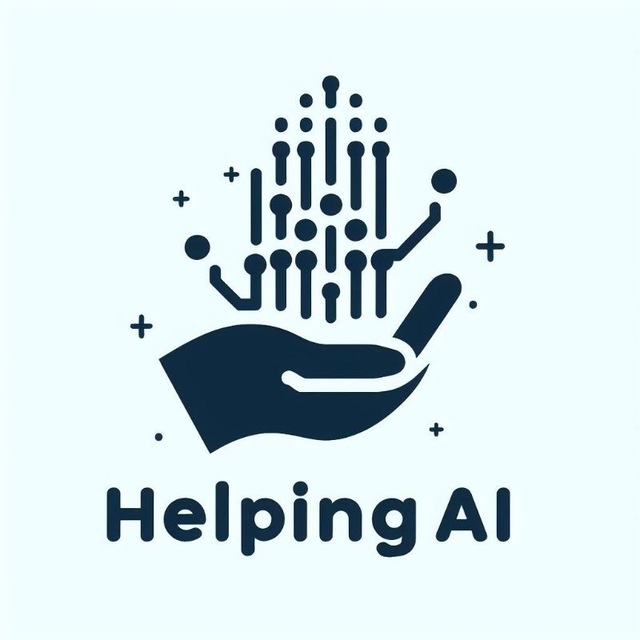How to Pre-train AI Model with HelpingAI Architecture
 Abhay Koul
Abhay KoulHello, amazing AI enthusiasts! 👋 Ready to embark on an exciting journey of pre-training an AI model using the innovative HelpingAI architecture? Let's dive in! 🌊💻
Step 1: Set Up Your Environment 🛠️
First, let's get everything ready! We'll clone the repository and install the necessary packages. Here's how:
import sys
import subprocess
from typing import List
def install(package_name: str) -> None:
try:
subprocess.check_call([sys.executable, "-m", "pip", "install", package_name])
print(f"Yay! 🎉 {package_name} installed successfully.")
except subprocess.CalledProcessError as e:
print(f"Oops! 😅 Couldn't install {package_name}. Error: {e}")
def clone_repository(url: str, destination: str) -> None:
try:
subprocess.check_call(['git', 'clone', url, destination], stderr=subprocess.STDOUT)
print(f"Woohoo! 🎊 Repository cloned successfully from {url} to {destination}.")
except subprocess.CalledProcessError as e:
print(f"Uh-oh! 😟 Couldn't clone repository from {url}. Error: {e}")
# Let's clone the repository! 🐑🔬
repository_url: str = "https://github.com/OEvortex/HelpingAI.git"
repository_destination: str = "HelpingAI"
clone_repository(repository_url, repository_destination)
# Time to install our magical packages! ✨📦
packages_to_install: List[str] = [
"datasets",
"trl==0.8.4",
"accelerate",
"bitsandbytes"
]
for package in packages_to_install:
install(package)
my_model: str = "LLM"
Step 2: Configure Your Model 🧠💡
Now, let's set up our model configuration. We're going for a smaller model to keep things manageable:
import torch
from HelpingAI.HelpingAI_.configuration_HelpingAI import HelpingAIConfig
from HelpingAI.HelpingAI_.modeling_HelpingAI import HelpingAIForCausalLM
from transformers import TrainingArguments, AutoTokenizer
from datasets import load_dataset
from trl import SFTTrainer
from HelpingAI.HelpingAI_.tokenization_HelpingAI_fast import HelpingAITokenizerFast
# Let's create our amazing model configuration! 🌟
configuration: HelpingAIConfig = HelpingAIConfig(
vocab_size=50281,
hidden_size=512,
num_hidden_layers=6,
num_attention_heads=8,
head_dim=64,
num_local_experts=4,
num_experts_per_tok=1,
intermediate_size=1024,
hidden_act="silu",
hidden_dropout=0.1,
attention_dropout=0.1,
classifier_dropout=0.1,
max_position_embeddings=2048,
initializer_range=0.02,
rms_norm_eps=1e-6,
layer_norm_eps=1e-5,
use_cache=True,
bos_token_id=50278,
eos_token_id=50279,
num_key_value_heads=8,
norm_eps=1e-05,
)
# Time to create our fantastic model! 🎭
model: HelpingAIForCausalLM = HelpingAIForCausalLM(configuration)
# Let's get our tokenizer ready! 🔤
tokenizer: HelpingAITokenizerFast = HelpingAITokenizerFast.from_pretrained("Abhaykoul/HelpingAI-tokenizer", local_files_only=False)
tokenizer.pad_token = tokenizer.eos_token
print(f"Wow! 😮 Our model has {model.num_parameters():,} parameters!")
Step 3: Prepare Your Dataset 📚🔍
Now, let's get our dataset ready for training:
# Time to load our exciting dataset! 📖
dataset: datasets.Dataset = load_dataset('roneneldan/TinyStories', split="train")
# Let's shake things up a bit! 🎲
dataset = dataset.shuffle(seed=42)
print(f'Amazing! 🌟 We have {len(dataset)} prompts to work with!')
print(f'Our dataset columns are: {dataset.column_names}')
Step 4: Train Your Model 🏋️♀️💪
Now for the exciting part - training our model!
from trl import SFTTrainer
from transformers import TrainingArguments
trainer: SFTTrainer = SFTTrainer(
model=model,
tokenizer=tokenizer,
train_dataset=dataset,
dataset_text_field="text",
max_seq_length=2048,
dataset_num_proc=2,
args=TrainingArguments(
per_device_train_batch_size=2,
gradient_accumulation_steps=1,
warmup_steps=2,
max_steps=20000,
learning_rate=1e-4,
logging_steps=100,
output_dir="M_outputs",
overwrite_output_dir=True,
save_steps=20000,
optim="paged_adamw_32bit",
report_to="none"
)
)
# Let's train our model! 🚂💨
trainer.train()
trainer.save_model(my_model)
Step 5: Share Your Model with the World! 🌍🎁
Finally, let's push our amazing model to the Hugging Face Hub:
model.push_to_hub(my_model, use_temp_dir=False, token="hf_***************************")
tokenizer.push_to_hub(my_model, use_temp_dir=False,token="hf_***************************")
And there you have it! 🎉 You've successfully pre-trained an AI model using the HelpingAI architecture. Remember, the journey of AI is all about exploration and learning. Keep experimenting, stay curious, and most importantly, have fun! 😄🚀
Happy coding, AI adventurers! 🦸♀️🦸♂️
Subscribe to my newsletter
Read articles from Abhay Koul directly inside your inbox. Subscribe to the newsletter, and don't miss out.
Written by

Abhay Koul
Abhay Koul
I am a developer from KP Colony, Vessu, Anantnag. I have been actively involved in AI projects since January 2023, and I am dedicated to crafting emotionally intelligent conversational AI models. My work includes developing HelpingAI, an advanced AI that provides personalized assistance and empathetic interactions.